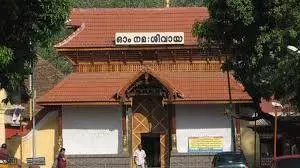UPSC Relevance
GS-1: Indian Society – Caste Dynamics, Social Reform Initiatives
GS-2: Governance – Rights of Marginalized Groups, Civil Society’s Role
GS-4: Ethics – Social Equity, Fairness, Reforms in Religious Traditions

Key Highlights
Historic Social Reform
- For the first time, the temple’s nalamabalam (inner sanctum area) welcomed all communities.
- Previously, access was limited to Brahmin, Marar, and Warrier communities.
- Forces Behind the Change
- The reform was driven by the Pilicode Ninav Purush Swayaamsahaya Sangham, a men’s self-help group.
- Their push for universal temple access gained backing from Janakiya Samithi, a socio-cultural group advocating for temple entry rights.
Role of Authorities
- The Malabar Devaswom Board manages the temple.
- Minister V.N. Vasavan and other government figures endorsed the reform.
- The Tantri (priest) permitted prayers near the inner quarter after rituals during Vishu.
Permanent Change
While the initial entry occurred symbolically on Vishu’s eve, Janakiya Samithi confirmed that access is now permanent.
Significance
Social Inclusion: Breaks caste barriers, fostering equality in religious spaces.
Cultural Progress: Adapts traditions to align with modern values of justice and inclusion.
Grassroots Impact: Shows how local groups can drive transformative change.
Analysis & Way Forward
- Religious institutions are central to Indian society; inclusive reforms can spark wider societal shifts.
- Historical temple entry movements, like those led by Ambedkar and Periyar, set precedents for such changes.
- Sustained awareness, education, and legal protections are vital to uphold and prevent reversal of these reforms.




